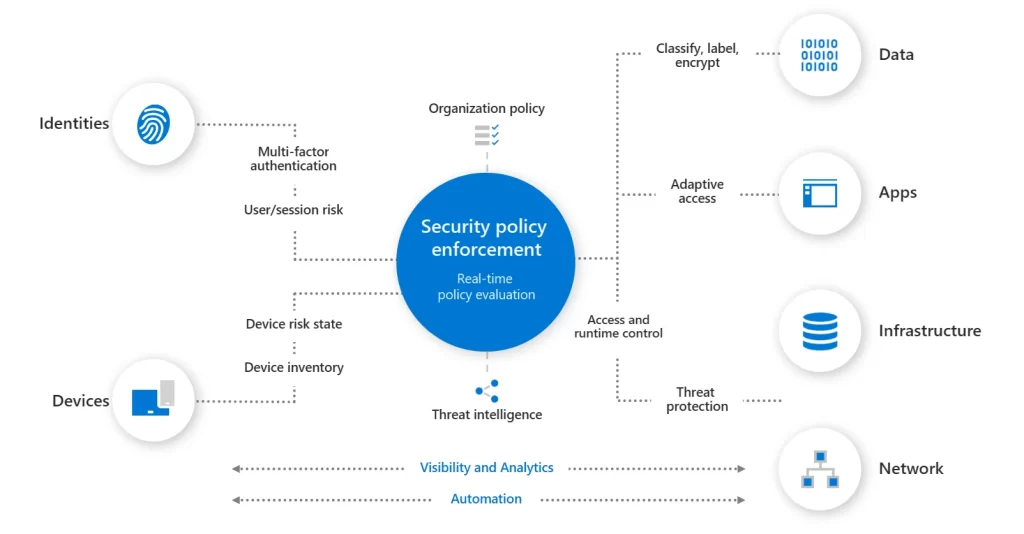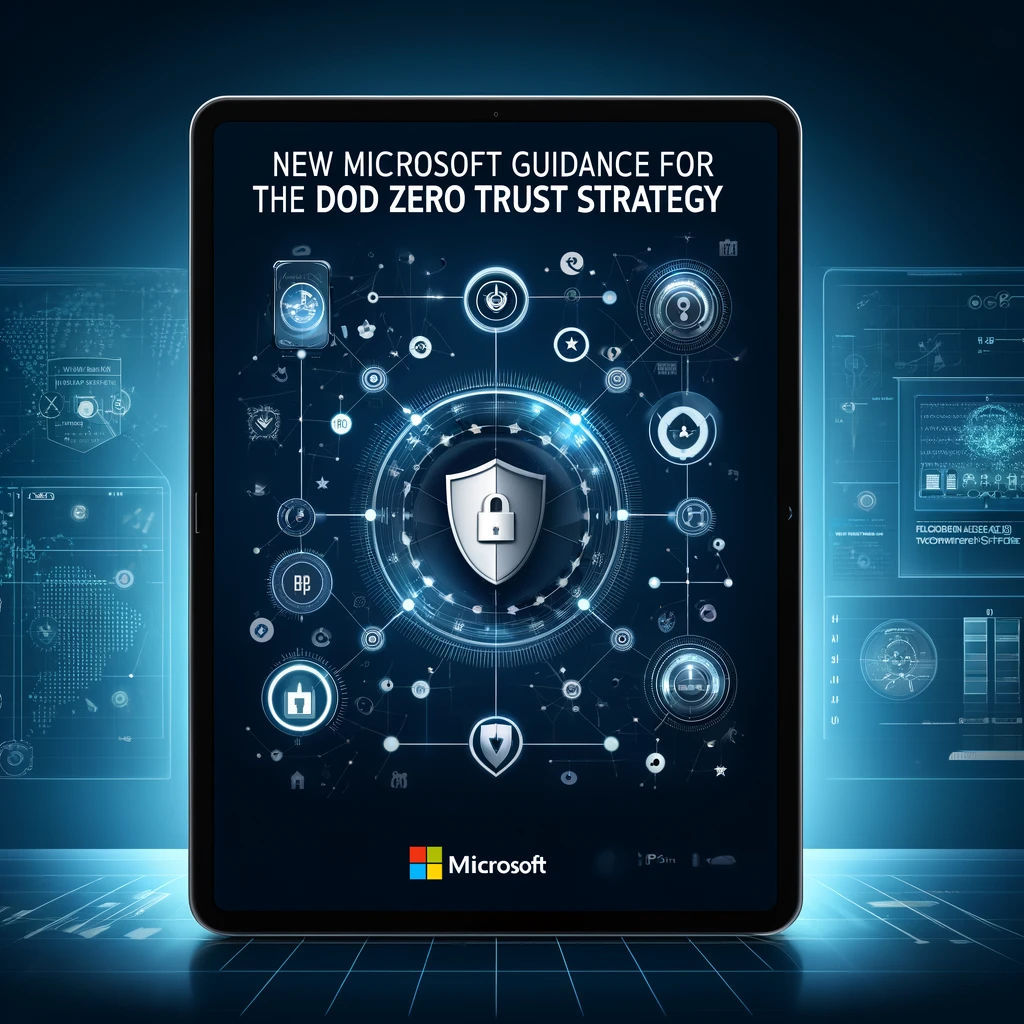The Department of Defense (DoD) adopted a Zero Trust security framework in October 2022, which focuses on seven key areas: users, devices, applications, data, networks, automation/orchestration, and visibility/analytics.
To implement this strategy, a capabilities-based execution roadmap was published in January 2023 outlining 45 Zero Trust capabilities across the seven pillars, with 152 specific activities divided into two phases with deadlines.
Target Level Zero Trust, the first phase, has a 2027 completion deadline, and 2032 is the target date for the more sophisticated functionalities.
Microsoft released new Zero Trust activity-level guidance to help DoD (Department of Defense) implement Zero Trust using Microsoft cloud services like Microsoft 365 DoD and Azure Government.
The guidance includes actionable steps and references for each DoD Zero Trust activity and Microsoft will update this guidance as new features become available and plans to introduce new zero-trust technologies like Microsoft Copilot for Security and Security Service Edge to US government clouds in the future.

Microsoft’s Zero Trust platform
Microsoft positions itself as a leader in Zero Trust security solutions, according to the Forrester WaveTM report, as their Zero Trust platform integrates security across identity, devices, applications, data, infrastructure, networks, and workloads.

Microsoft 365 E5 combines productivity applications with security features that fulfill all seven pillars of the DoD Zero Trust Strategy by offering a multi-cloud and multi-platform solution with pre-integrated XDR, cloud-based device management, and cloud-based identity and access management for a comprehensive Zero Trust platform.
Microsoft Entra ID provides multicloud identity and access management, acting as a zero-trust identity provider that integrates with Microsoft services and uses industry standards for secure access control across various applications.
Microsoft Intune, a multiplatform endpoint management suite, works with Defender for Endpoint to enforce security policies, assess device health, and ensure compliance with Zero Trust principles. Together, these solutions address the user and device trust pillars of the DoD Zero Trust Strategy.
Microsoft security solutions describe application development, data security, networking, and security operations. GitHub Advanced Security helps improve code quality and identify security vulnerabilities, whereas Microsoft Purview offers data classification, loss prevention, and governance.
Azure networking services provide secure communication and traffic management, while Microsoft Defender XDR coordinates threat detection, prevention, investigation, and response across various security products. Microsoft Sentinel is a cloud-based SIEM that centralizes log data for security information gathering and event management.
The US Department of Defense (DoD) is implementing Zero Trust with Microsoft products. Examples include the Navy’s Flank Speed program, which onboarded over 560,000 users and utilized compliant access, continuous authorization, least privilege access, and data-centric security controls.
The Army’s 365 environment migrated over 1.4 million users and petabytes of data, incorporating Zero Trust principles with identity and device protection and BYOD support.
Never forget to check out our YouTube channel, ETHICAL EMPIRE, and keep reading our exciting blogs. Until next time, stay curious, stay secure, and keep exploring the fascinating world of cyber security. See you soon, bye!
Try Hack Me’s 1 Month Voucher Giveaway Link : https://forms.gle/xpqS2jgspyC22K5d8






















